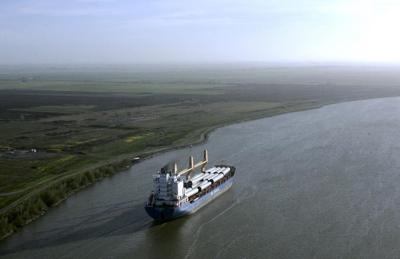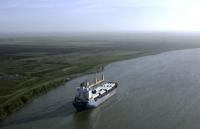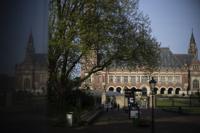SACRAMENTO, Calif. (AP) — A California judge says a nearly 65-year-old law does not give the state permission to borrow the billions of dollars it would need to build a large water project, a decision that could threaten a key source of funding for a controversial plan backed by Gov. Gavin Newsom to build a massive underground tunnel that would reroute a big part of the state's supply.
The Department of Water Resources approved a resolution in 2020 to borrow money for an unspecified “Delta Program." The agency said it could borrow this money without asking for permission from the state Legislature because a law, last amended in 1959, says it can make changes to a portion of the State Water Project — a complex system of dams and canals that supplies water to about 27 million people.
But environmental groups and several Central Valley counties say that resolution was too broad. They say what the agency wants to build is a tunnel that would be outside the scope of the law. DWR’s latest proposal is to construct a tunnel about 45 miles (72 kilometers) long and 36 feet (10.9 meters) wide, able to carry 161 million gallons of water per minute out of the Central Valley and to the densely populated southern portion of the state.
On Tuesday, after years of lengthy court proceedings, Sacramento Superior Court Judge Kenneth C. Mennemeier agreed with the counties. He said the state's definition of the project “leaves the door open" for the state to build whatever it wants, which he said is not allowed under the law.
“Although the Legislature plainly delegated broad authority to DWR, it did not delegate infinite authority,” Mennemeier wrote.
Mennemeier emphasized that his ruling was “quite narrow,” only applying to the Newsom administration's unspecified “Delta Program” as defined in the DWR resolution.
Thomas Keeling, an attorney who represents six counties and various public water agencies, said it’s clear to him that the purpose of the bond resolutions approved by the Newsom administration in 2020 was to provide financing for the Delta tunnel project. He agreed the ruling is narrow because it doesn’t prevent the administration from finding other ways to pay for the project.
“That said, it would be a mistake to downplay the significance of this decision or to understate the obstacles that lie ahead for DWR in any subsequent effort to finance this taxpayer boondoggle,” he said.
Environmental groups and counties that oppose the project cheered the ruling as a blow to the tunnel's financing. The project's price tag was once put at $16 billion, but that was an old estimate for a previous plan. The state has not released updated estimates.
The DWR downplayed the significance of the ruling, although it said it disagreed with the decision and is considering an appeal. Margaret Mohr, deputy director of communications for the department, said the judge essentially rejected the broadness of the definition of the “Delta Program" and did not make a ruling specific to the tunnel.
“The judge has not said that DWR doesn’t have the authority to build the project or borrow money to pay for it," Mohr said. Mohr added that “the Delta Conveyance Project is a critical part of California’s strategy to ensure a reliable water supply for millions of Californians — modernizing our water infrastructure to protect against the impacts of earthquakes, climate change, and more.”
The tunnel has been proposed — and disputed — for many years, earning widespread opposition from Central Valley communities that say it would harm their economies and the Sacramento-San Joaquin River Delta’s fragile ecosystem. The Newsom administration says the tunnel is a necessary upgrade of aging infrastructure that would help the state capture more water during intense rainstorms.
It's not clear what other options the Department of Water Resources could pursue to pay for the project. Asking for approval from voters or the state Legislature would be difficult. Just last year, lawmakers insisted on from a law Newsom signed aimed at speeding up how long it takes to build large infrastructure projects.
Newsom, however, has been steadfast in his support for the project. Last month, his administration — the final step of a lengthy state regulatory process. But the project still must complete a federal environmental review and obtain various state and federal permits — a process that is expected to last until 2026.






































